Thunbergioideae
Agneta Julia Borg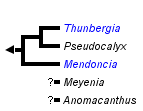


This tree diagram shows the relationships between several groups of organisms.
The root of the current tree connects the organisms featured in this tree to their containing group and the rest of the Tree of Life. The basal branching point in the tree represents the ancestor of the other groups in the tree. This ancestor diversified over time into several descendent subgroups, which are represented as internal nodes and terminal taxa to the right.

You can click on the root to travel down the Tree of Life all the way to the root of all Life, and you can click on the names of descendent subgroups to travel up the Tree of Life all the way to individual species.
For more information on ToL tree formatting, please see Interpreting the Tree or Classification. To learn more about phylogenetic trees, please visit our Phylogenetic Biology pages.
close boxIntroduction
The acanthaceous subfamily Thunbergioideae consist of around 170 species distributed widely throughout tropical and subtropical regions of the world. Of the five presently recognized genera (Scotland & Vollesen 2000), Thunbergia and Mendoncia contain almost all the species, ca. 100 and 60, respectively. Thunbergia is well represented in tropical and subtropical regions of Africa and Madagascar, Asia and Australia. The range of Mendoncia partially overlaps with that of Thunbergia, with a few species native to tropical Africa and Madagascar, but the greatest diversity is found in tropical America. The remaining genera are Pseudocalyx, with around 8 species in tropical Africa, and monotypic Anomacanthus (tropical Africa and Madagascar) and Meyenia (India and Sri Lanka).
Characteristics
Thunbergioideae are mainly climbing herbs, often with showy flowers presenting elaborated pollination mechanisms (Endress 1994). The flowers have a much reduced calyx, seen as a very small rim or crown around the floral base. Protection of the young flowers is instead provided by two enlarged bracteoles which initially enclose the bud and usually persist during flowering. The fruits of Thunbergia, Meyenia and Pseudocalyx are dry dehiscent capsules, but they differ from those of core Acanthaceae in that they lack retinacula (hook-like modified funiculi). Furthermore, the fruits of Mendoncia and Anomacanthus are unique among Acanthaceae in being fleshy indehiscent drupes. The anthers of Thunbergioideae are distinctive in that they lack endothecium (a layer of cells involved in anther dehiscence), and the thecae open by pores or short slits, which in some Thunbergia have evolved into long slits (Borg et al. 2006).
Discussion of Phylogenetic Relationships
The monophyly of Thunbergioideae is strongly supported by both molecular and morphological evidence. The monophyly of the three major genera Thunbergia, Mendoncia and Pseudocalyx is also supported by morphology (Schönenberger and Endress 1998) as well as DNA data (Borg et al. 2008; Borg unpublished data). The remaining two genera, Anomacanthus and Meyenia, are monotypic, although the generic status of Meyenia is disputed and some authors have considered it a species belonging to Thunbergia.
Presently, no phylogenetic analyses have included all five genera. Molecular analyses of Thunbergia, Pseudocalyx and Mendoncia (Borg et al. 2008) suggest the two former are sister groups, and together they are sister to Mendoncia. Also morphology demonstrates the close relationship between Thunbergia and Pseudocalyx. Both Thunbergia and Pseudocalyx have dry capsules, like all other Acanthaceae, whereas Mendoncia is exceptional among Acanthaceae because of the possession of fleshy drupes; a character only shared with Anomacanthus. Furthermore, the fruits of Thunbergia and Pseudocalyx have two fertile locules, while in Mendoncia only one of two initiated locules develops fully. These dissimilarities have led some authors to place Mendoncia in a separate subfamily Mendoncioideae (Lindau 1895) or even a separate family Mendonciaceae (Bremekamp 1953). However, there are also characters linking Mendoncia to Thunbergia and, in particular, to Pseudocalyx. These include e.g. stigma shape and anther dehiscence, and several authors have rejected the raise of Mendoncia to family rank (e.g. Brummitt 1989). More recently, Schönenberger & Endress (1998) showed that the drupaceous fruits in Mendoncia and the dry capsules in Thunbergia and Pseudocalyx actually have an identical bauplan and that differences arise late during floral development.
References
Benoist, R. 1944. Contribution a la conaissance des Acanthacées africaines et malgaches. Notul. Syst. 11: 137-151.
Borg, A. J., McDade, L. A. and J. Schönenberger. 2005. Molecular systematics and biogeographic patterns in Thunbergioideae s.l. (Acanthaceae) based on phylogenetic analyses of nuclear and chloroplast sequence data. XVII International Botanical Congress, Vienna, Austria.
Borg, A. J., McDade, L. A. and J. Schönenberger. 2008. Molecular phylogenetics and morphological evolution of Thunbergioideae (Acanthaceae). Taxon 57: 811-822.
Bremekamp, C. E. B. 1953. The delimitation of the Acanthaceae. Proc. Kon. Ned. Akad. Wetensch. C 56: 533-546.
Bremekamp, C. E. B. 1965. Delimitation and subdivision of the Acanthaceae. Bull. Bot. Surv. India 7: 21-30.
Brummitt, R. K. 1989. Against separating Mendonciaceae from Acanthaceae. Acanthus 5: 1-3.
Endress, P. K. 1994. Diversity and evolutionary biology of tropical flowers. Cambridge University Press, Cambridge, U.K.
Lindau, G. 1895. Acanthaceae. Pp. 274-354 in: Engler, A. & Prantl, K. (eds.), Die Natürlichen Pflanzenfamilien, vol. 3b. Engelmann, Leipzig.
McDade, L. A., Masta, S. E., Moody, M. L. & E. Waters. 2000. Phylogenetic relationships Acanthaceae: Evidence from two genomes. Syst. Bot. 25: 106-121.
Schönenberger, J., & P. K. Endress. 1998. Structure and development of the flowers in Mendoncia, Pseudocalyx, and Thunbergia (Acanthaceae) and their systematic implications. Int. J. Pl. Sci. 159: 446-465.
Schönenberger, J. 1999. Structure and development of flowers and systematics in Thunbergioideae s.l. (Acanthaceae). Ph.D. dissertation, University of Zürich, Switzerland.
Scotland, R. W., & K. Vollesen. 2000. Classification of Acanthaceae. Kew Bull. 55: 513-589.
van Tieghem, M. P. 1908. Structure du pistil et de l'ovule, du fruit et de la graine des Acanthacées. Ann. Sci. Nat., Bot. 7: 1-24.
Title Illustrations

| Scientific Name | Thunbergia angulata Hils. et Bojer ex Hook. |
|---|---|
| Location | Madagascar |
| Specimen Condition | Live Specimen |
| Image Use |
 This media file is licensed under the Creative Commons Attribution-NonCommercial-ShareAlike License - Version 3.0. This media file is licensed under the Creative Commons Attribution-NonCommercial-ShareAlike License - Version 3.0.
|
| Copyright |
© Agneta Julia Borg

|
| Scientific Name | Mendoncia retusa Turrill |
|---|---|
| Location | Costa Rica |
| Specimen Condition | Live Specimen |
| Image Use |
 This media file is licensed under the Creative Commons Attribution-NonCommercial-ShareAlike License - Version 3.0. This media file is licensed under the Creative Commons Attribution-NonCommercial-ShareAlike License - Version 3.0.
|
| Copyright |
© Agneta Julia Borg

|
About This Page
Agneta Julia Borg

Stockholm University, Stockholm, Sweden
Correspondence regarding this page should be directed to Agneta Julia Borg at
Page copyright © 2011 Agneta Julia Borg
 Page: Tree of Life
Thunbergioideae.
Authored by
Agneta Julia Borg.
The TEXT of this page is licensed under the
Creative Commons Attribution-NonCommercial-ShareAlike License - Version 3.0. Note that images and other media
featured on this page are each governed by their own license, and they may or may not be available
for reuse. Click on an image or a media link to access the media data window, which provides the
relevant licensing information. For the general terms and conditions of ToL material reuse and
redistribution, please see the Tree of Life Copyright
Policies.
Page: Tree of Life
Thunbergioideae.
Authored by
Agneta Julia Borg.
The TEXT of this page is licensed under the
Creative Commons Attribution-NonCommercial-ShareAlike License - Version 3.0. Note that images and other media
featured on this page are each governed by their own license, and they may or may not be available
for reuse. Click on an image or a media link to access the media data window, which provides the
relevant licensing information. For the general terms and conditions of ToL material reuse and
redistribution, please see the Tree of Life Copyright
Policies.
- First online 05 October 2007
- Content changed 30 March 2011
Citing this page:
Borg, Agneta Julia. 2011. Thunbergioideae. Version 30 March 2011. http://tolweb.org/Thunbergioideae/52301/2011.03.30 in The Tree of Life Web Project, http://tolweb.org/





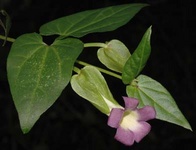
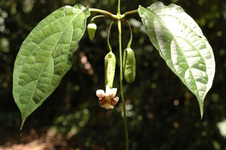
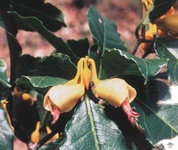
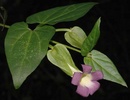
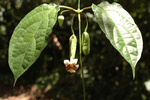


 Go to quick links
Go to quick search
Go to navigation for this section of the ToL site
Go to detailed links for the ToL site
Go to quick links
Go to quick search
Go to navigation for this section of the ToL site
Go to detailed links for the ToL site